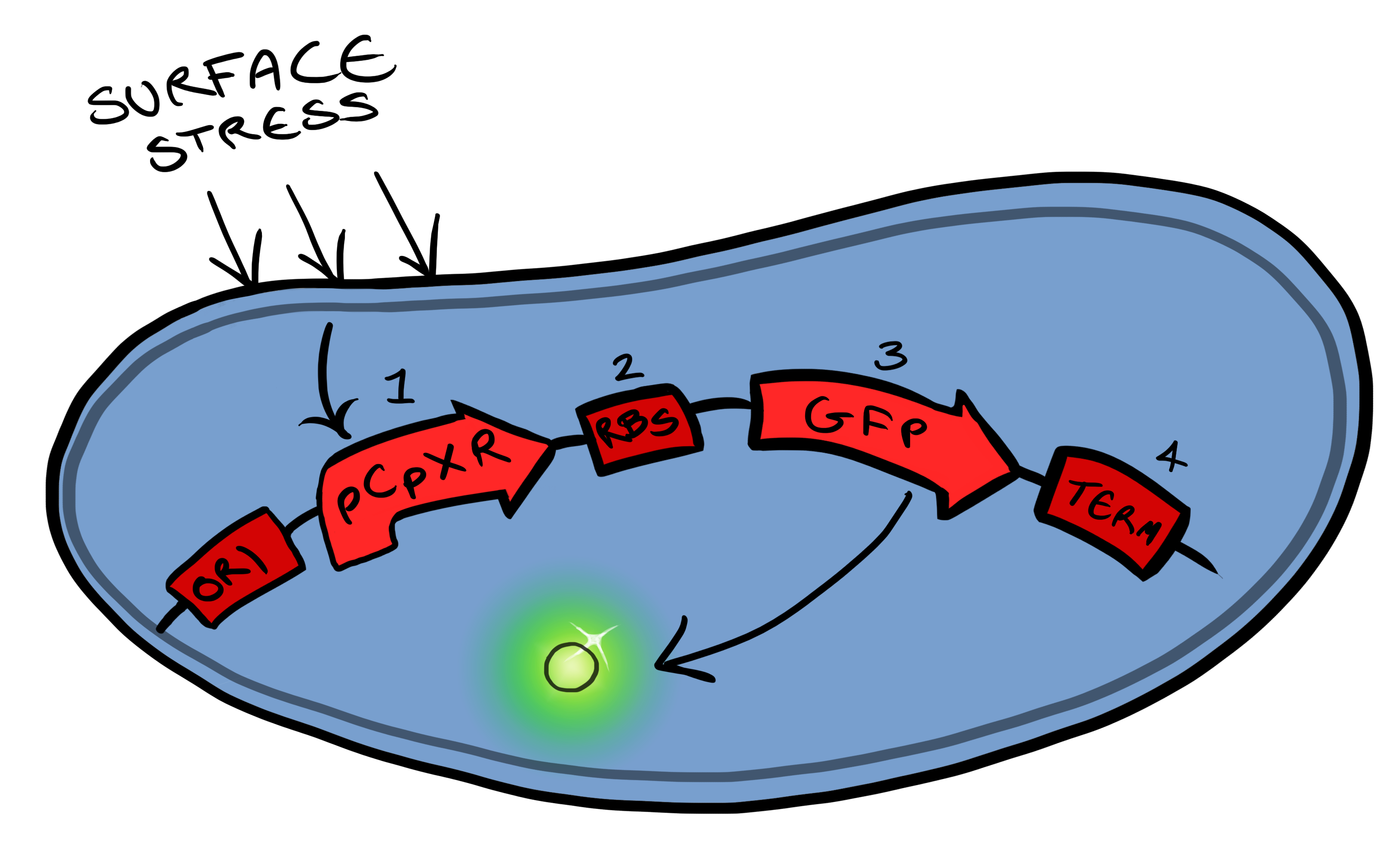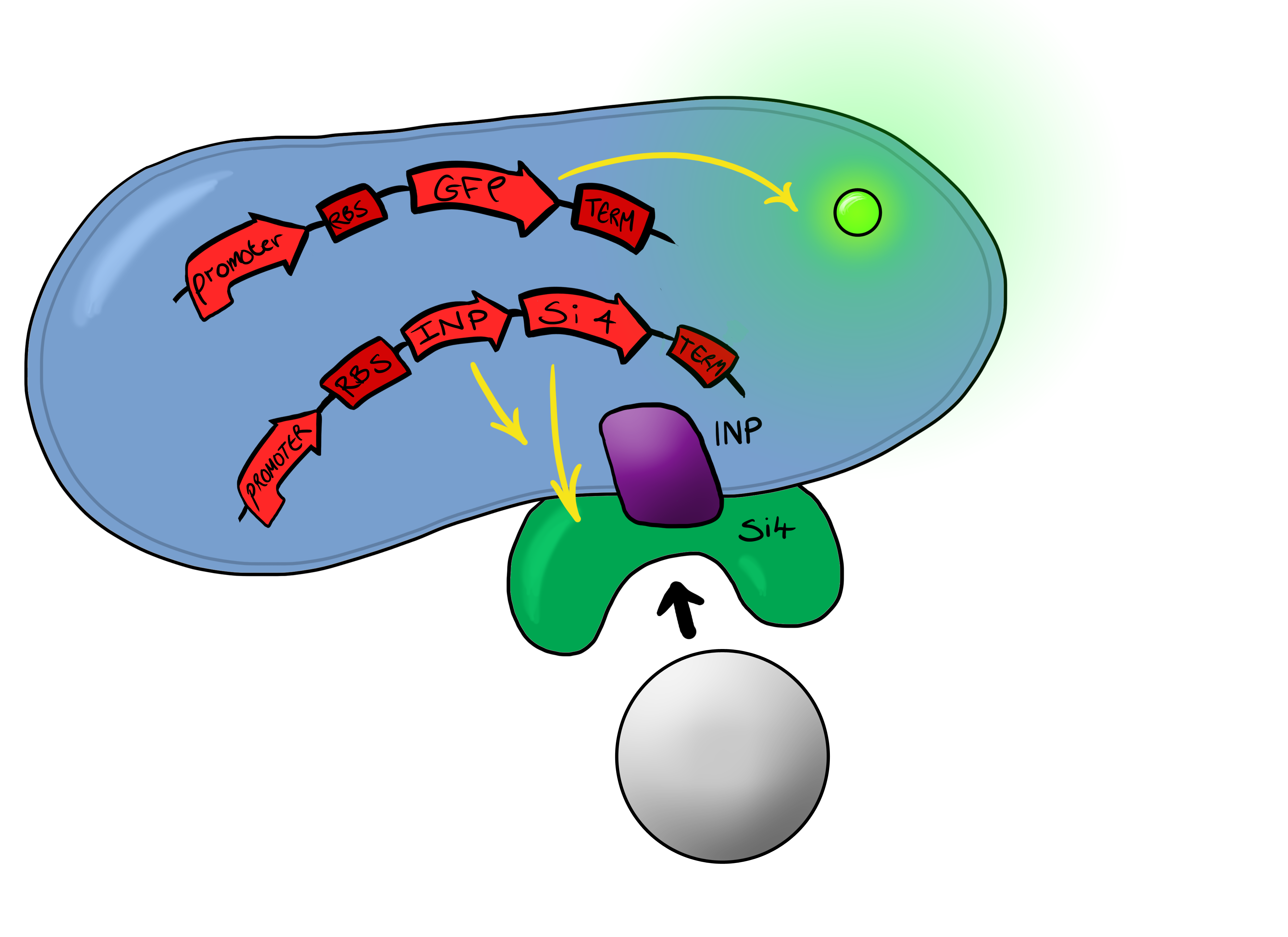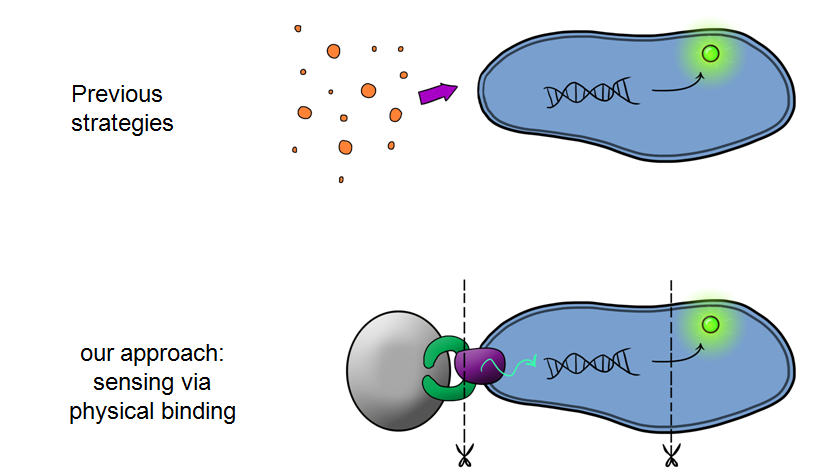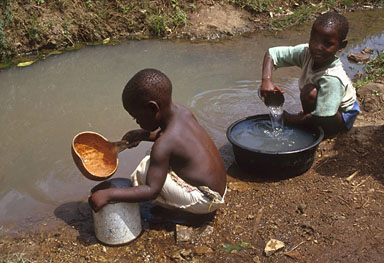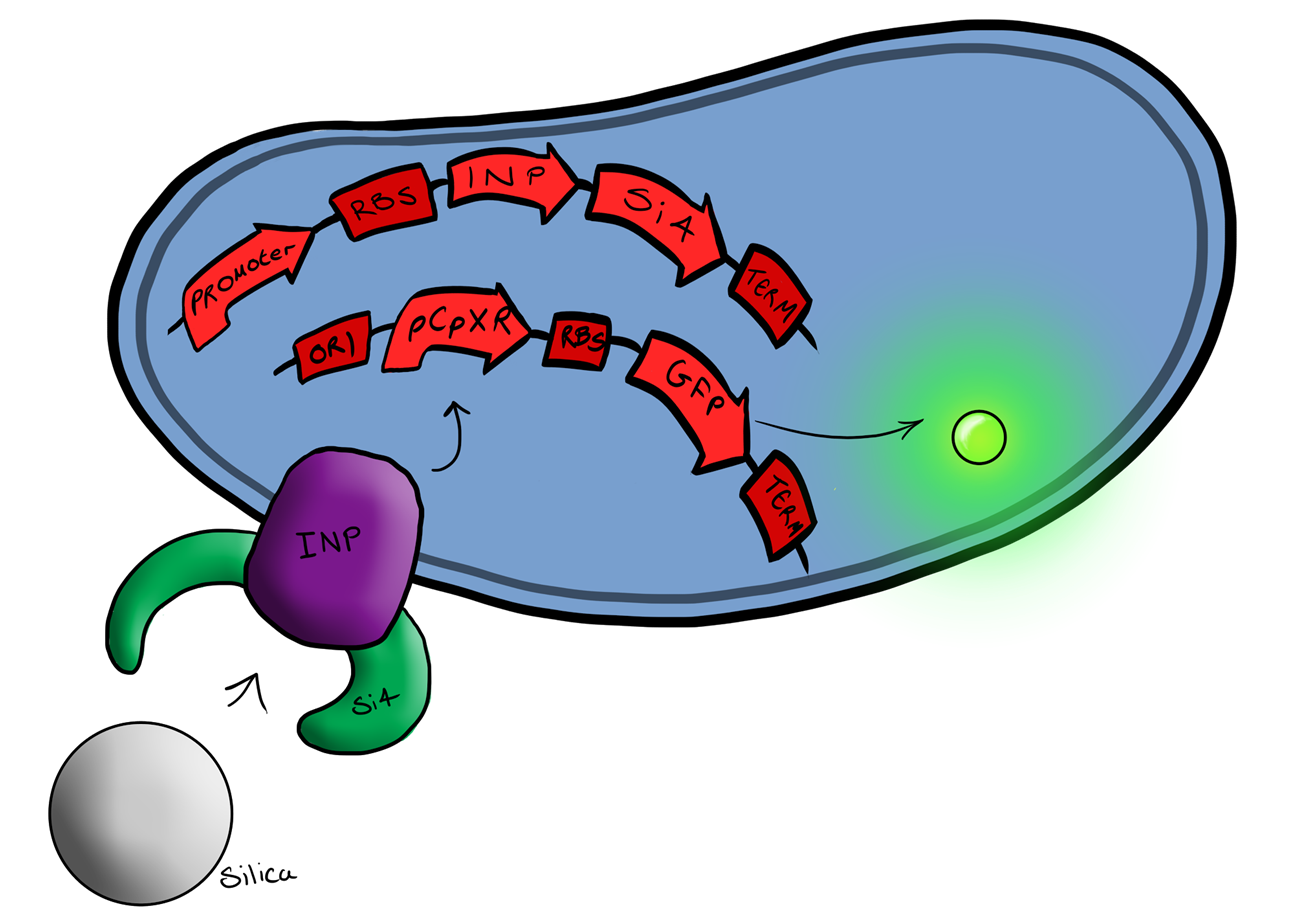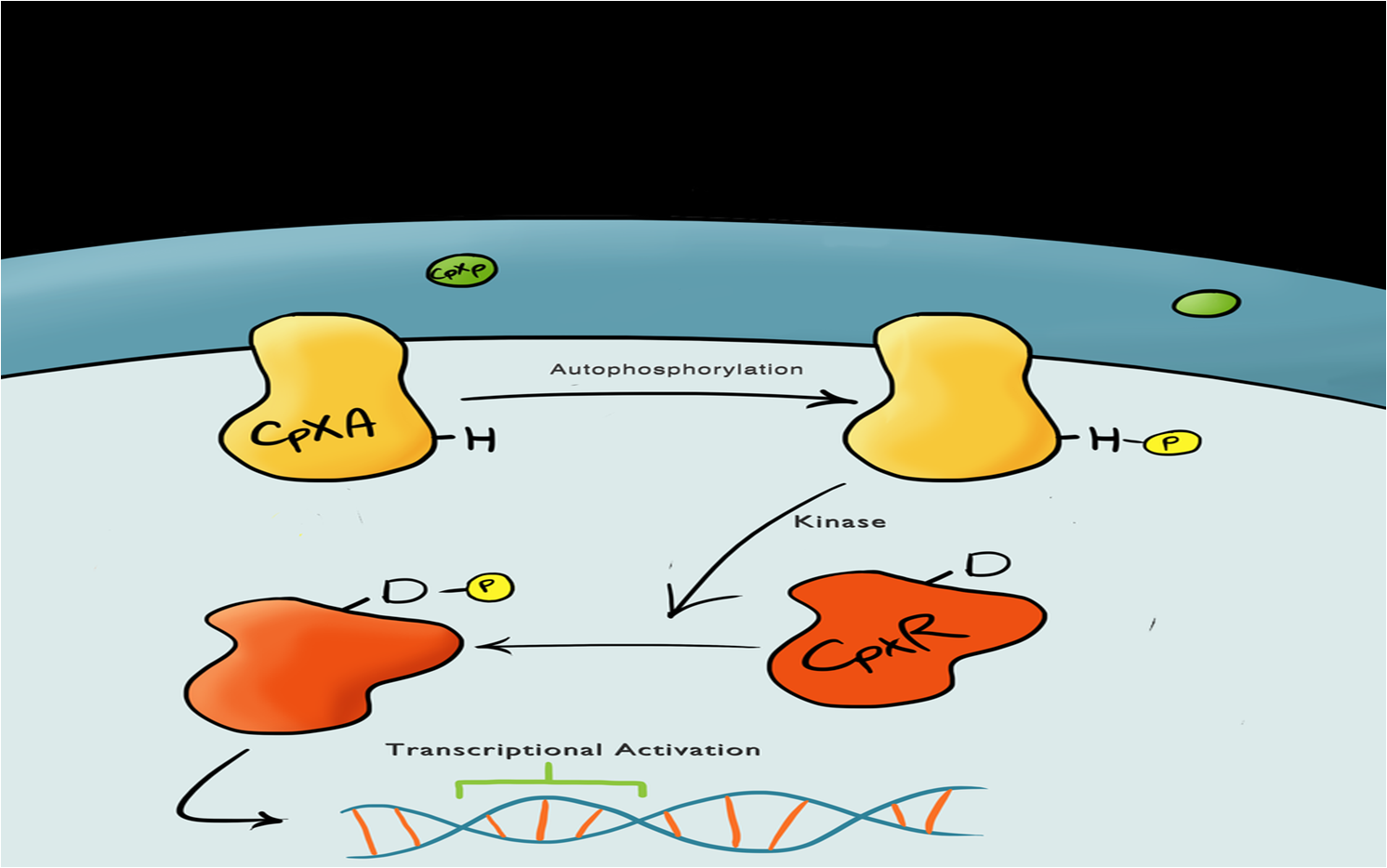Team:Leeds/Project
From 2013.igem.org
(Difference between revisions)
m |
|||
| Line 60: | Line 60: | ||
==Why Water Testing is so important== | ==Why Water Testing is so important== | ||
[[File:Dirtywater.png|right|300px|Would you like to have to drink this water?|link=|frameless]] | [[File:Dirtywater.png|right|300px|Would you like to have to drink this water?|link=|frameless]] | ||
| - | Detecting pathogens in water is a really important application as 3.4 million people a year die from water related diseases. | + | Detecting pathogens in water is a really important application as 3.4 million people a year die from water related diseases<sup>[http://www.who.int/water_sanitation_health/takingcharge.html 1],[http://water.org/water-crisis/water-facts/water/ 2]</sup>. |
| - | 768 million people in the world do not have access to safe water. This is roughly one in ten of the world's population, the majority of which is caused by faecal contamination: poor sewage systems that flow back into the water supply. | + | <br> |
| - | The issue is actually more complex and subtle than just direct health problems, as the knock on economic problems that result from poor sanitation are also damaging. | + | 768 million people in the world do not have access to safe water<sup>[http://www.unicefusa.org/work/water/ 3]</sup>. This is roughly one in ten of the world's population, the majority of which is caused by faecal contamination: poor sewage systems that flow back into the water supply<sup>[http://www.who.int/water_sanitation_health/bathing/srwe1-chap4.pdf 4]</sup>. |
| - | Lack of water, sanitation and hygiene costs Sub-Saharan African countries more in lost GDP than the entire continent gets in development aid. | + | <br> |
| - | The figures are shocking and we as a team want to create something that may, in the future, help to reduce those numbers. | + | The issue is actually more complex and subtle than just direct health problems, as the knock on economic problems that result from poor sanitation are also damaging. Lack of water, sanitation and hygiene costs Sub-Saharan African countries more in lost GDP than the entire continent gets in development aid<sup>[http://dspace.cigilibrary.org/jspui/bitstream/123456789/20135/1/Human%20Development%20Report%202006%20Beyond%20Scarcity%20Power%20poverty%20and%20the%20global%20water%20crisis.pdf?1 5]</sup>. The figures are shocking and we as a team want to create something that may, in the future, help to reduce those numbers. |
| - | While many organizations are creating new, appropriate water purification devices and systems, we realize these will only be as good as the measurement technologies available to test their performance will allow. This measurement bottleneck is particularly critical in infrastructure-poor areas with no or limited access to the molecular biology labs typically used to assay for water-borne pathogens. | + | <br> |
| - | While many teams around the world are seeking new ways of transporting chassis and bio-devices in facile, safe, and reliable manners (e.g., through capsules or spores), we felt that efforts to develop modular pathogen detection systems were lacking. Once effective transport strategies are established, we hope to have a detection system ready-to-go for on-site water testing and diagnostics. | + | While many organizations are creating new, appropriate water purification devices and systems, we realize these will only be as good as the measurement technologies available to test their performance will allow. This measurement bottleneck is particularly critical in infrastructure-poor areas with no or limited access to the molecular biology labs typically used to assay for water-borne pathogens. |
| + | <br> | ||
| + | While many teams around the world are seeking new ways of transporting chassis and bio-devices in facile, safe, and reliable manners (e.g., through capsules or spores), we felt that efforts to develop modular pathogen detection systems were lacking. Once effective transport strategies are established, we hope to have a detection system ready-to-go for on-site water testing and diagnostics. | ||
| + | <br> | ||
To address this issue using a novel synthetic biological approach, the MircoBeagle was born! | To address this issue using a novel synthetic biological approach, the MircoBeagle was born! | ||
<br> | <br> | ||
===Below is a summary of our Device development strategy...=== | ===Below is a summary of our Device development strategy...=== | ||
| - | |||
==Phase I== | ==Phase I== | ||
We split our project into self-contained phases, to help better organise ourselves, but also lay out a road map for our own future work within iGEM and beyond. Our two devices include a device for activating a reporter in response to membrane stress (Device 1) and a device for binding to a physical target at the cell surface and thereby activate the membrane-stress-reporter (Device 2). | We split our project into self-contained phases, to help better organise ourselves, but also lay out a road map for our own future work within iGEM and beyond. Our two devices include a device for activating a reporter in response to membrane stress (Device 1) and a device for binding to a physical target at the cell surface and thereby activate the membrane-stress-reporter (Device 2). | ||
| Line 76: | Line 78: | ||
[[File:Leeds_bb1schematic.png|left|400px|Cartoon schematic of Biosystem 1|link=|frameless]] | [[File:Leeds_bb1schematic.png|left|400px|Cartoon schematic of Biosystem 1|link=|frameless]] | ||
Device 1 is a very simple modification of the pCpxR promoter in ''E. coli'' to produce a fluorescent reporter when the cell is under membrane stress. Activation of Cpx pathways in response to solid surface interactions was first reported by [http://www.ncbi.nlm.nih.gov/pubmed/11830644 ''Otto & Silhaevy 2001''] in which hydrophobically treated glass beads were used to induce membrane stress. Given that the promoter pCpxR was specifically shown to be activated by this interaction, our hope is that, in initial stages of MicroBeagle development, this promoter can respond to a wide variety of physical binding interactions when these are specifically designed for target surfaces. pCpxR is present in the registry of standard biological parts, examined previously by [http://parts.igem.org/wiki/index.php?title=Part:BBa_K339007 Calgary 2010] and [http://parts.igem.org/Part:BBa_K135001?title=Part:BBa_K135001 BCCS-Bristol 2008]. In our MicroBeagle work, we aim to further explore and characterize this promoter, and investigate for the first time the utility of this promoter in generating a reporting signal when specifically coupled with a designed cell surface-solid target binding interaction. We characterized our Device 1, pCpxR-GFP, by testing fluorescence generation vs a variety of potential membrane-stress-inducing environments, including various concentrations of a detergent (triton X-100) and the presence of various solid particles. | Device 1 is a very simple modification of the pCpxR promoter in ''E. coli'' to produce a fluorescent reporter when the cell is under membrane stress. Activation of Cpx pathways in response to solid surface interactions was first reported by [http://www.ncbi.nlm.nih.gov/pubmed/11830644 ''Otto & Silhaevy 2001''] in which hydrophobically treated glass beads were used to induce membrane stress. Given that the promoter pCpxR was specifically shown to be activated by this interaction, our hope is that, in initial stages of MicroBeagle development, this promoter can respond to a wide variety of physical binding interactions when these are specifically designed for target surfaces. pCpxR is present in the registry of standard biological parts, examined previously by [http://parts.igem.org/wiki/index.php?title=Part:BBa_K339007 Calgary 2010] and [http://parts.igem.org/Part:BBa_K135001?title=Part:BBa_K135001 BCCS-Bristol 2008]. In our MicroBeagle work, we aim to further explore and characterize this promoter, and investigate for the first time the utility of this promoter in generating a reporting signal when specifically coupled with a designed cell surface-solid target binding interaction. We characterized our Device 1, pCpxR-GFP, by testing fluorescence generation vs a variety of potential membrane-stress-inducing environments, including various concentrations of a detergent (triton X-100) and the presence of various solid particles. | ||
| - | |||
<br style="clear:both"/> | <br style="clear:both"/> | ||
===Si4 Binding Peptide=== | ===Si4 Binding Peptide=== | ||
Our second device of interest ("Device 2", described below) utilizes, in addition to the pCpxR reporter system (above), a surface-displayed target-binding moiety for physical attachment to particles. Display of the target-binding moiety utilizes Ice Nucleation Protein (INP) to display an oligo-peptide of our choice on the outer-membrane of our ''E. coli''. Initially this will be a peptide capable of binding silica beads, allowing us to create a non-toxic model system of pathogen detection for initial stages of device development. INP is a transmembrane protein that expresses any sequence that is placed on the C-terminus of its gene on the outer surface of the cell. Specifically, we utilized the INP display system developed by [http://parts.igem.org/Part:BBa_K811003?title=Part:BBa_K811003 UPenn 2012]. The silica binding domain we utilized, termed "Si4" was developed by [http://www.ingentaconnect.com/content/asp/jnn/2002/00000002/00000001/art00015 Naik, Lawrence, Clarson, and Stone 2002]. This silica-binding polypeptide was discovered via phage display screening, and was also found to precipitate silica when reacted with silicic acid. This provided us with an additional route to test for the presence of Si4 on cell surfaces, i.e. via mineralization assays using silicic acid as a mineral precursor. | Our second device of interest ("Device 2", described below) utilizes, in addition to the pCpxR reporter system (above), a surface-displayed target-binding moiety for physical attachment to particles. Display of the target-binding moiety utilizes Ice Nucleation Protein (INP) to display an oligo-peptide of our choice on the outer-membrane of our ''E. coli''. Initially this will be a peptide capable of binding silica beads, allowing us to create a non-toxic model system of pathogen detection for initial stages of device development. INP is a transmembrane protein that expresses any sequence that is placed on the C-terminus of its gene on the outer surface of the cell. Specifically, we utilized the INP display system developed by [http://parts.igem.org/Part:BBa_K811003?title=Part:BBa_K811003 UPenn 2012]. The silica binding domain we utilized, termed "Si4" was developed by [http://www.ingentaconnect.com/content/asp/jnn/2002/00000002/00000001/art00015 Naik, Lawrence, Clarson, and Stone 2002]. This silica-binding polypeptide was discovered via phage display screening, and was also found to precipitate silica when reacted with silicic acid. This provided us with an additional route to test for the presence of Si4 on cell surfaces, i.e. via mineralization assays using silicic acid as a mineral precursor. | ||
| - | |||
<br style="clear:both"/> | <br style="clear:both"/> | ||
| - | |||
<br> | <br> | ||
==Phase II== | ==Phase II== | ||
| Line 91: | Line 90: | ||
<br style="clear:both"/> | <br style="clear:both"/> | ||
This is the final MircoBeagle device and has the potential to be made into many different pathogen detectors. This can easily be done by swapping out the gene coding for the binding moiety next to the INP gene. Once Device 2 has been suitably characterised and all bugs fixed, the next step will be to swap the silca binding domain for a binding domain that binds to a particular pathogen. | This is the final MircoBeagle device and has the potential to be made into many different pathogen detectors. This can easily be done by swapping out the gene coding for the binding moiety next to the INP gene. Once Device 2 has been suitably characterised and all bugs fixed, the next step will be to swap the silca binding domain for a binding domain that binds to a particular pathogen. | ||
| - | + | <br> | |
We note that given the conceptual modularity of our MicroBeagle strategy, in principle any of the key device elements--surface-displayed binding domain, transmembrane scaffold protein, stress-activated promoter, and/or fluorescent or colorimetric report--can be optimized or exchanged for new specific elements that exhibit the intended component function. In the future, performance of the device components should be amenable to evolutionary improvement, either individually or in tandem. In fact, the binding domain element would benefit from a plethora of evolutionary screens that have already been conducted in biomedical and biotechnological labs worldwide to identify protein and peptide binders to a wide range of both biological and non-biological targets. | We note that given the conceptual modularity of our MicroBeagle strategy, in principle any of the key device elements--surface-displayed binding domain, transmembrane scaffold protein, stress-activated promoter, and/or fluorescent or colorimetric report--can be optimized or exchanged for new specific elements that exhibit the intended component function. In the future, performance of the device components should be amenable to evolutionary improvement, either individually or in tandem. In fact, the binding domain element would benefit from a plethora of evolutionary screens that have already been conducted in biomedical and biotechnological labs worldwide to identify protein and peptide binders to a wide range of both biological and non-biological targets. | ||
| - | |||
<br style="clear:both"/> | <br style="clear:both"/> | ||
==The Cpx Pathway== | ==The Cpx Pathway== | ||
Revision as of 01:59, 5 October 2013
 "
"






